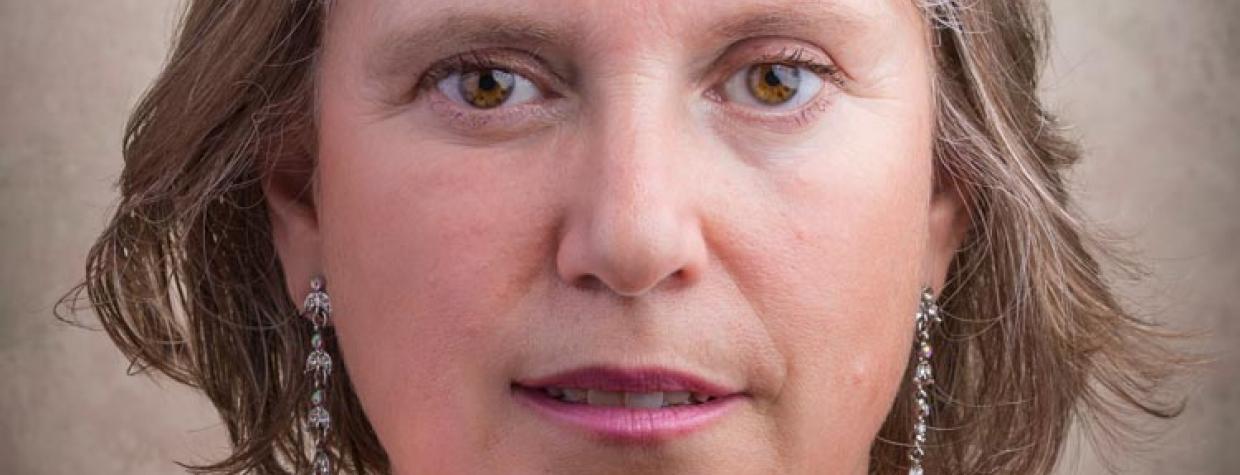The unparalleled beauty of the night sky at Grand Canyon National Park — an International Dark Sky Park — attracts stargazers, photographers and astronomers alike. As Grand Canyon Conservancy’s new astronomer in residence, Imma Barrera hopes to inspire others by showcasing the wonders of the night sky in a light-saturated world.
Barrera is a biologist, landscape and nature photographer and conservationist who was born in Barcelona, Spain. Now based in New Jersey, she exhibits her photography in galleries around the world. She’s a graduate of the New York Institute of Photography and has been selected for several artist-in-residence programs at national parks around the country. Her current project, Under the Night Sky, presents different features of national parks in the format of a book, combining photography and nature education to illustrate the parks’ efforts to preserve the environment.
The GCC program launched in the summer of 2021 and offers professional and amateur astronomers, educators, scientists, writers and artists the opportunity to share their expert knowledge, inspiration and equipment with visitors. During her monthlong residency at the Canyon, Barrera will host workshops and discussions. We spoke with her to learn more about her work and what she hopes to accomplish as astronomer in residence. (This Q&A has been edited for clarity and length.)
Tell us a little about yourself.
Since I was a child, nature and its beauty have fascinated me: the colors, textures and shapes, the harmonious and the dramatic, the big living creatures and the tiny microscopic organisms. I was gifted my first camera when I was 8 years old — a Kodak Instamatic — and my first task was documenting the things that would interest me. Some people write diaries; I take pictures. Nature and its beauty have always been a source of fascination for me. Therefore, I became a biologist with a passion for discovery. Photography is the perfect way to combine my scientific, analytical approach and curiosity to capture what is beautiful and inspiring on this planet. I am also an educator. I am currently a professor at a college in New Jersey, where I teach microbiology and photography.
How would you describe your style as a photographer?
Photography has been one of the tools that I used to collect data for my research. I spent countless hours staring through electron and optical microscopes and taking images of viruses and cells. I also dedicated a fair amount of time in the darkroom developing those images to collect sufficient data for statistical analysis. Nowadays, I view photography as a way to document nature, but with the artistic touch to connect on a deeper emotional level with the viewer. I capture whatever I feel connected to, with a strong emphasis on nature.
What drew you to the Grand Canyon?
The Colorado Plateau’s arid climate has produced many striking erosional forms, culminating in the Grand Canyon of the Colorado River. The Grand Canyon is considered one of the world's natural wonders, representing one of the most complete records of geological history extending back some 2 billion years. In addition to its impressive geology, several habitats can be found in this semi-arid desert, ranging from riparian vegetation and sandy beaches, to a desert scrub community, to and piñon pine, juniper, ponderosa pine and spruce-fir forests. The national park and the Grand Canyon Conservancy have been actively involved in preserving its pristine darkness with projects such as redesigning the lightning layout. Consequently, in June 2019, the Grand Canyon was certified as an International Dark Sky Park and won an award for International Dark Sky Place of the Year, making the park a must-visit chapter for my book.
What led you to apply for the astronomer-in-residence program?
Night photography offers a chance to capture scenes that few ever see and can be truly awe-inspiring. My current project, Under the Night Sky, involves raising awareness about the importance of protecting the night sky. Fortunately, light pollution, unlike many other forms of pollution, is reversible, and each one of us can make a difference. The main goal of my book is to capture these inspiring landscapes under the night sky. In this regard, I have been selected as an artist in residence by several national parks. My selection criterion for choosing the parks was to find a variety of ecosystems that would be representative of the natural diversity within the U.S. The night sky in the Northern Hemisphere is similar regardless of location, so my goal was for each chapter to document areas with very distinct habitats.
What are you most looking forward to during your time as astronomer in residence?
One of the opportunities of the astronomer-in-residence program is the public outreach program. We have agreed to offer a free presentation of my work and a night workshop. These events are free and open to the public, and I hope it will inspire others to learn about the night sky. I am also looking forward to cloudless night skies — weather is always a challenge for any landscape photographer. I am also excited about capturing some of the impressive wildlife and flora.
Learn more about Grand Canyon Conservancy’s astronomer-in-residence program.

